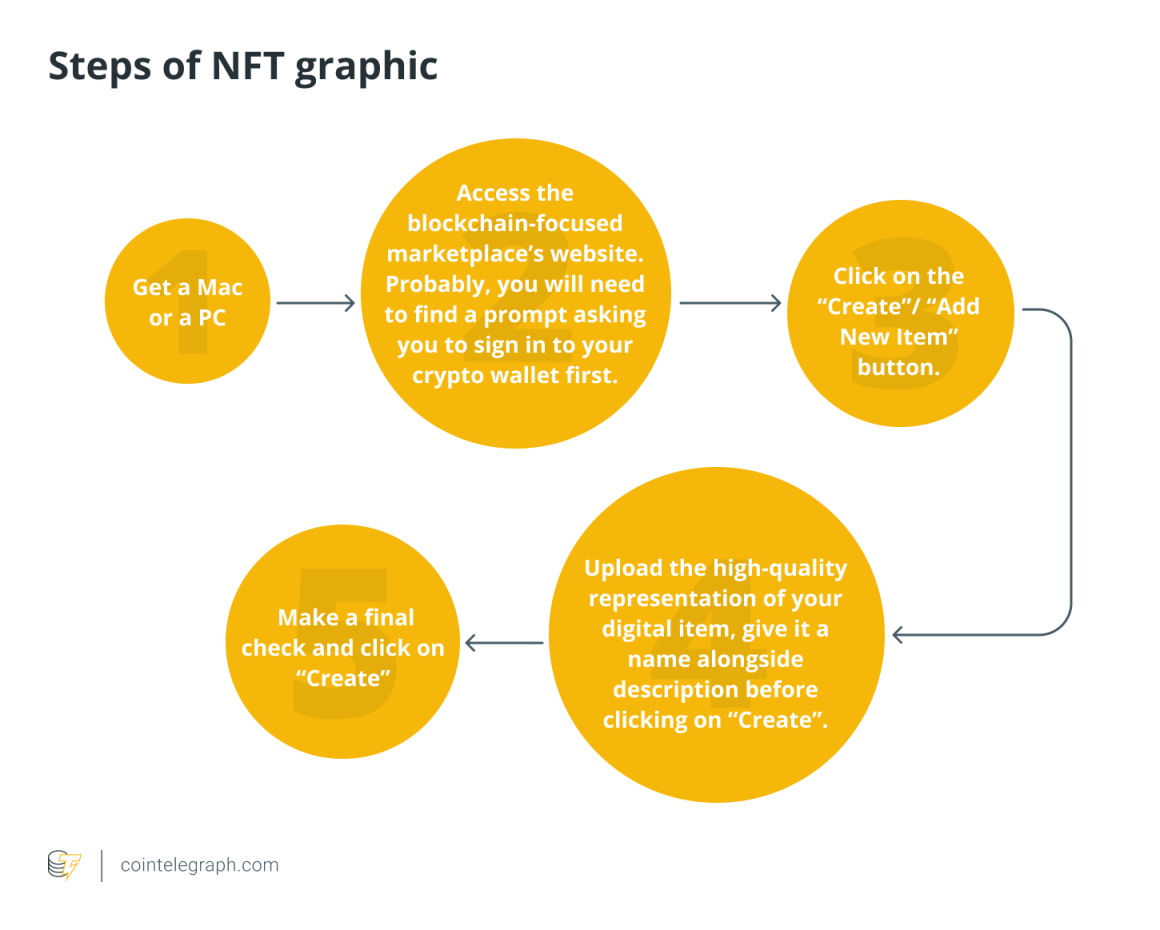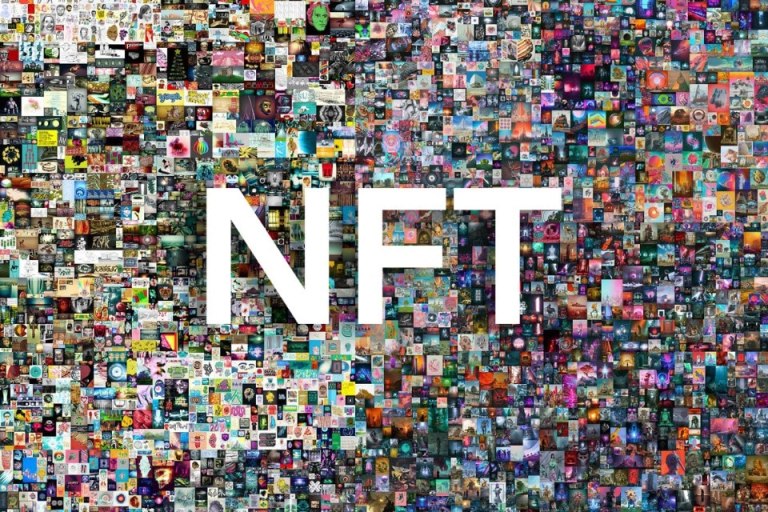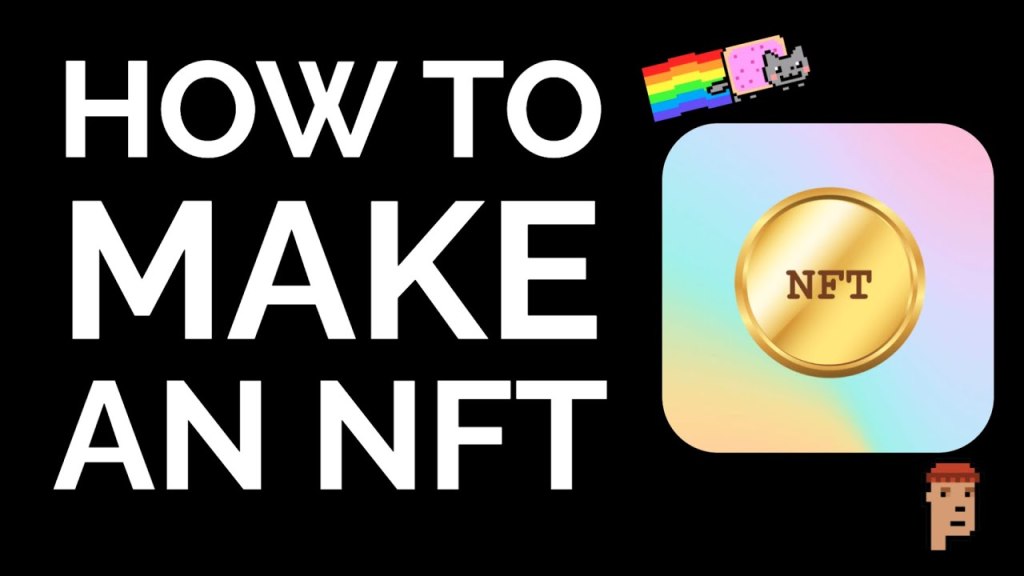How Is An NFT Created
Introduction
Dear NFT Enthusiasts,
Welcome to the world of non-fungible tokens (NFTs), where digital assets are revolutionizing the way we perceive ownership. In this article, we will explore the fascinating process of creating an NFT and delve into its significance in the digital realm.

Image Source: cointelegraph.com
Whether you are an artist looking to showcase your work, a collector seeking unique digital assets, or simply curious about the NFT phenomenon, this article will provide you with a comprehensive understanding of how an NFT is created.
So, let’s embark on this journey and uncover the intricacies of NFT creation together.
What is an NFT?
🔍 Before we dive into the creation process, let’s first understand what an NFT is. A non-fungible token represents a digital asset that is unique and indivisible, unlike cryptocurrencies such as Bitcoin or Ethereum. Each NFT has a distinct value and cannot be exchanged on a one-to-one basis like traditional currency.

Image Source: domusweb.it
🖼️ NFTs can be anything from digital art, music, videos, virtual real estate, collectibles, or even virtual experiences. They are based on blockchain technology, ensuring transparency, security, and immutability.
🔒 Ownership of an NFT is recorded on the blockchain, providing proof of originality, provenance, and authenticity. This cryptographic record allows creators to monetize their digital creations and collectors to own unique digital assets.

Image Source: ytimg.com
Now that we have a basic understanding of NFTs, let’s explore how they are created.
Who Can Create an NFT?
👨🎨 Anyone with digital content can create an NFT. This inclusivity is one of the key aspects that make NFTs so appealing. Artists, musicians, photographers, writers, and even social media influencers can create NFTs to showcase their creations and interact with their audience in innovative ways.
🌐 The decentralized nature of blockchain technology enables creators from all around the world to participate in the NFT ecosystem without any middlemen or gatekeepers. This democratized access has opened up new opportunities for artists and creators to monetize their work directly.
Let’s explore the process of creating an NFT in more detail.
When and Where to Create an NFT?
📅 NFT creation platforms have gained immense popularity in recent years, and there are numerous options available to creators. Some of the popular platforms include Ethereum-based marketplaces like OpenSea, Rarible, and SuperRare.
💻 These platforms offer a user-friendly interface where creators can mint their digital assets as NFTs and list them for sale. Each platform has its own set of guidelines, fees, and requirements, so creators must choose the platform that aligns with their goals.
⛓️ It is worth noting that NFTs are typically created on blockchain networks like Ethereum, which utilize smart contracts to facilitate the creation, ownership, and transfer of digital assets. This ensures the security and immutability of NFTs.
Now that we know where and when to create an NFT, let’s explore the motivations behind their creation.
Why Create an NFT?
💰 Monetization: NFTs provide creators with a new revenue stream by allowing them to sell their digital creations directly to collectors. This eliminates the need for intermediaries and enables artists to earn royalties on secondary sales.
🌐 Global Reach: NFTs transcend geographical boundaries, enabling creators to reach a global audience. The decentralized nature of blockchain technology removes barriers, making it easier for artists to gain recognition and exposure.
🖼️ Authenticity and Scarcity: NFTs enable creators to establish provenance and authenticity for their digital assets. By attaching the creator’s signature to the NFT and limiting the number of editions, creators can enhance the value and exclusivity of their work.
🌱 Community Engagement: NFTs foster a sense of community and interaction between creators and collectors. Creators can engage with their audience through gamification, virtual events, and social media interactions, creating a more immersive experience.
Now that we understand the motivations behind NFT creation, let’s delve into the process of creating an NFT.
How to Create an NFT?
🖌️ Creation Process: The first step in creating an NFT is to decide on the digital asset you want to tokenize. It can be a piece of artwork, a music track, a video, or any other digital item. Once you have the asset ready, you need to choose a platform to mint the NFT.
🔗 Minting the NFT: On the chosen platform, you will typically need to connect your digital wallet, such as MetaMask, to initiate the minting process. You will provide details about your digital asset, including its title, description, royalty percentage, and any additional attributes.
⛓️ Smart Contract Creation: The platform will guide you through the process of creating a smart contract, which defines the rules and conditions of your NFT. Once the smart contract is created, you will need to confirm and pay the gas fees required for the transaction to be processed on the blockchain.
🎉 Congratulations! Your NFT is now minted and recorded on the blockchain. You can choose to list it for sale or keep it in your digital wallet.
These are the essential steps involved in creating an NFT. However, it is important to research and understand the specific requirements and guidelines of the platform you choose.
Advantages and Disadvantages of NFT Creation
Advantages:
1️⃣ Increased Revenue Streams: NFT creation allows artists to tap into a new market and earn revenue from their digital creations.
2️⃣ Ownership and Authenticity: NFTs provide a secure and transparent way to establish ownership and authenticity for digital assets.
3️⃣ Global Exposure: NFTs enable creators to reach a global audience and gain recognition beyond traditional boundaries.
Disadvantages:
1️⃣ Environmental Concerns: The energy consumption associated with blockchain networks like Ethereum has raised concerns regarding the environmental impact of NFTs.
2️⃣ Market Volatility: The NFT market can be volatile, with prices fluctuating rapidly. This can pose risks for both creators and collectors.
3️⃣ Copyright Challenges: NFTs have raised questions about copyright ownership, licensing, and fair use of digital assets.
Frequently Asked Questions (FAQs)
1. What happens if I lose access to my NFT?
🔑 If you lose access to your NFT, it becomes challenging to prove ownership. It is essential to securely store your digital wallet and backup your private keys.
2. Can I sell a fraction of an NFT?
🔢 Yes, fractional ownership of NFTs is possible. Fractionalization platforms allow users to buy and sell fractions of NFTs, enabling broader access to high-value assets.
3. Are there any copyright implications with NFTs?
©️ NFTs do not transfer copyright ownership. Creators retain their copyright unless explicitly stated otherwise.
4. Can I create an NFT of someone else’s work?
🖨️ Generally, you should only create an NFT of your original work or obtain the necessary permissions from the original creator. Unauthorized use of someone else’s work can lead to legal consequences.
5. Can I create an NFT on multiple platforms?
🌐 Yes, you can create NFTs on different platforms. However, it is important to consider exclusivity and potential conflicts if the same asset is listed on multiple platforms.
Conclusion
In conclusion, the creation of an NFT opens up a world of possibilities for artists, creators, and collectors. By leveraging blockchain technology, NFTs provide a secure and transparent way to tokenize and own digital assets.
Whether you are an artist looking to monetize your creativity, a collector seeking unique digital assets, or simply intrigued by the NFT phenomenon, understanding the process of NFT creation is essential.
So, dive into the exciting world of NFTs, explore different platforms, and unleash your creativity. Create, collect, and connect in this new era of digital ownership.
Final Remarks
Disclaimer: The information provided in this article is for informational purposes only. It does not constitute financial or legal advice. Readers are advised to conduct their own research and seek professional guidance before engaging in any NFT-related activities.
Remember to stay informed, be cautious of potential risks, and enjoy the journey of NFT creation responsibly.